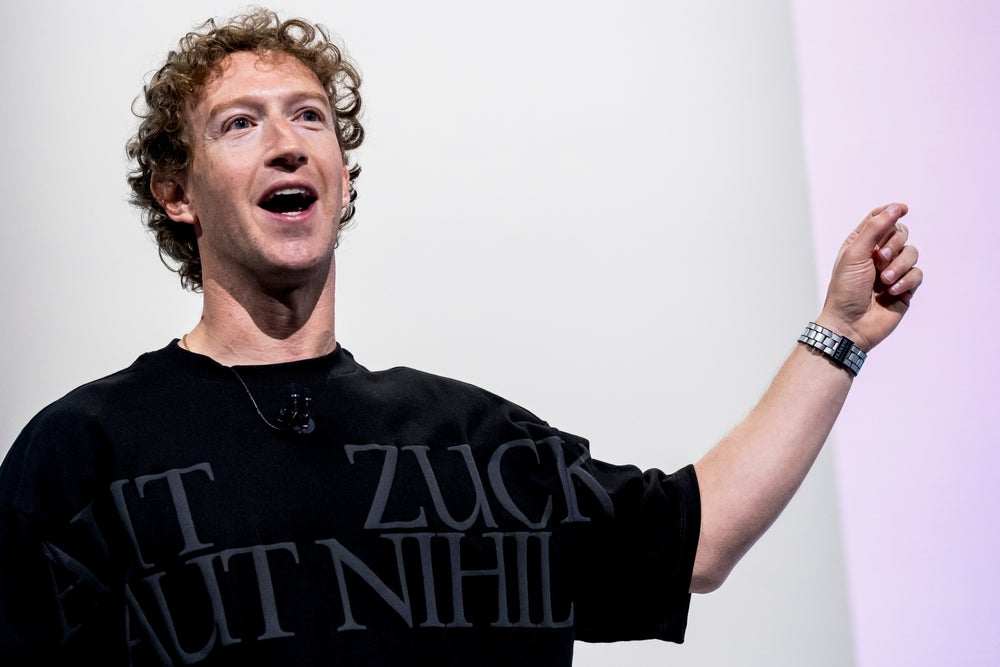AI Startup TML From Ex-OpenAI Exec Mira Murati Pays $500,000
The $10 billion AI startup Thinking Machines Lab (TML), which was founded by former OpenAI Chief Technology Officer Mira Murati in February, is paying its technical talent up to half a million dollars in salary, according to federal data obtained by Business Insider.
The federal filings, which show how much TML’s hires on H-1B visas were being paid, showed that the company paid three technical staffers $450,000 each, while a fourth received $500,000 in compensation. The figures were from the first quarter of this year and just included salary, not added sign-on bonuses and equity awards. The H-1B allows U.S. employers to hire non-U.S. residents to work in specialty occupations.
Related: Here’s How Much a Typical Salesforce Employee Makes in a Year
The compensation is more than some major players, including Murati’s former company, OpenAI, which reported paying an average salary of $292,115 to 29 technical employees. Anthropic, meanwhile, paid an average salary of $387,500 to 14 employees.
Murati spent six and a half years at OpenAI before stepping down as CTO in September.
TML has yet to launch any public-facing products, though the secretive startup raised $2 billion in seed funding last month at a $10 billion valuation. Its website says that the startup is working “to make AI systems more widely understood, customizable, and generally capable.”
 TML CEO Mira Murati. Photo by Patrick T. Fallon / AFP
TML CEO Mira Murati. Photo by Patrick T. Fallon / AFP
High salaries are just one tactic in Silicon Valley’s AI talent wars. Last month, OpenAI CEO Sam Altman said that Meta was trying to poach OpenAI researchers with “giant” signing bonuses of “$100 million” and “even more than that” in compensation.
Related: Here’s How Much a Typical Google Employee Makes in a Year
In fact, six top OpenAI researchers have joined Meta in the past few weeks as part of its new superintelligence team. The group included Shuchao Bi, co-creator of ChatGPT voice mode, and Shengjia Zhao, who co-created ChatGPT and previously led synthetic data at OpenAI.
Still, according to a leaked memo sent by OpenAI’s Chief Research Officer Mark Chen on Saturday to staff, the company isn’t “sitting idly by.” Top OpenAI leaders, including CEO Sam Altman, are “recalibrating” compensation and finding “creative ways” to reward talent, Chen noted.
The $10 billion AI startup Thinking Machines Lab (TML), which was founded by former OpenAI Chief Technology Officer Mira Murati in February, is paying its technical talent up to half a million dollars in salary, according to federal data obtained by Business Insider.
The federal filings, which show how much TML’s hires on H-1B visas were being paid, showed that the company paid three technical staffers $450,000 each, while a fourth received $500,000 in compensation. The figures were from the first quarter of this year and just included salary, not added sign-on bonuses and equity awards. The H-1B allows U.S. employers to hire non-U.S. residents to work in specialty occupations.
Related: Here’s How Much a Typical Salesforce Employee Makes in a Year
The rest of this article is locked.
Join Entrepreneur+ today for access.
AI Startup TML From Ex-OpenAI Exec Mira Murati Pays $500,000 Read More »






 Alexandr Wang. Photographer: David Paul Morris/Bloomberg via Getty Images
Alexandr Wang. Photographer: David Paul Morris/Bloomberg via Getty Images Meta CEO Mark Zuckerberg. Photographer: David Paul Morris/Bloomberg via Getty Images
Meta CEO Mark Zuckerberg. Photographer: David Paul Morris/Bloomberg via Getty Images
 OpenAI CEO Sam Altman. Photo by Justin Sullivan/Getty Images
OpenAI CEO Sam Altman. Photo by Justin Sullivan/Getty Images


